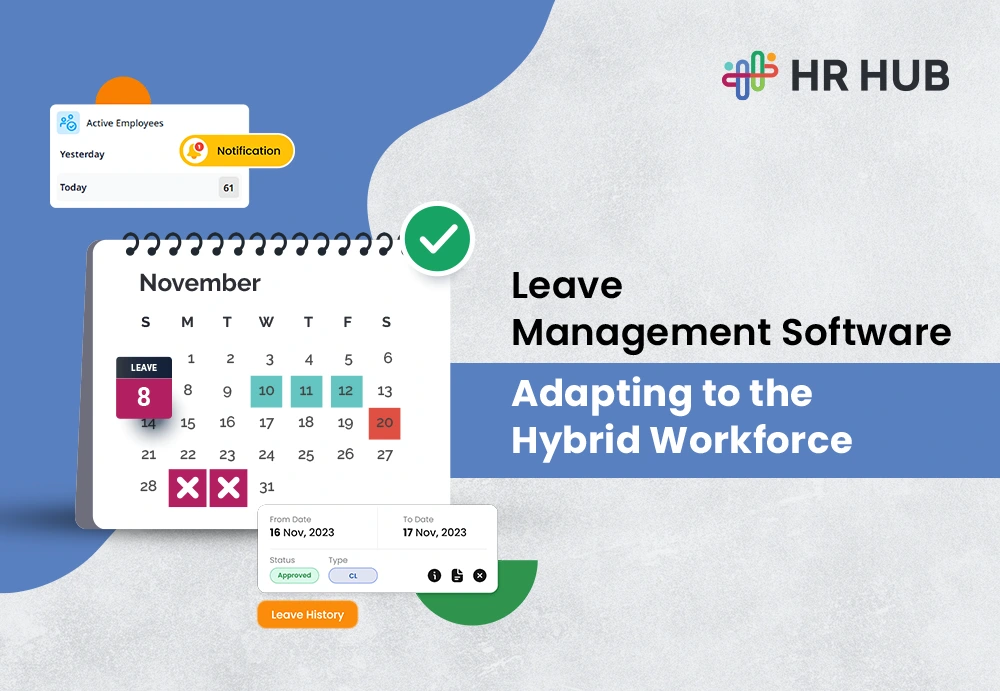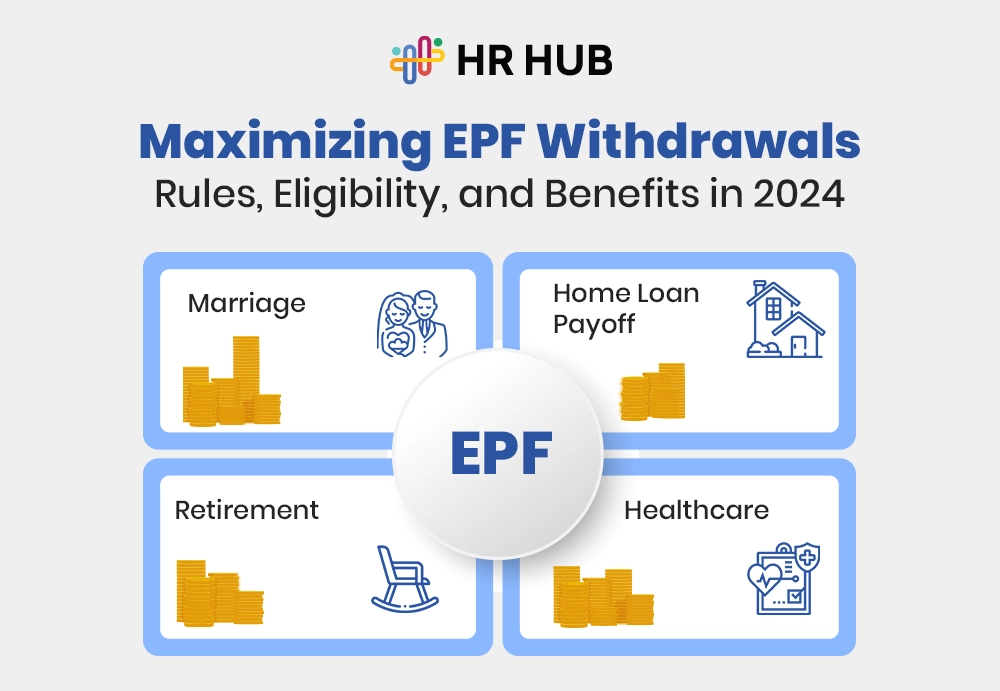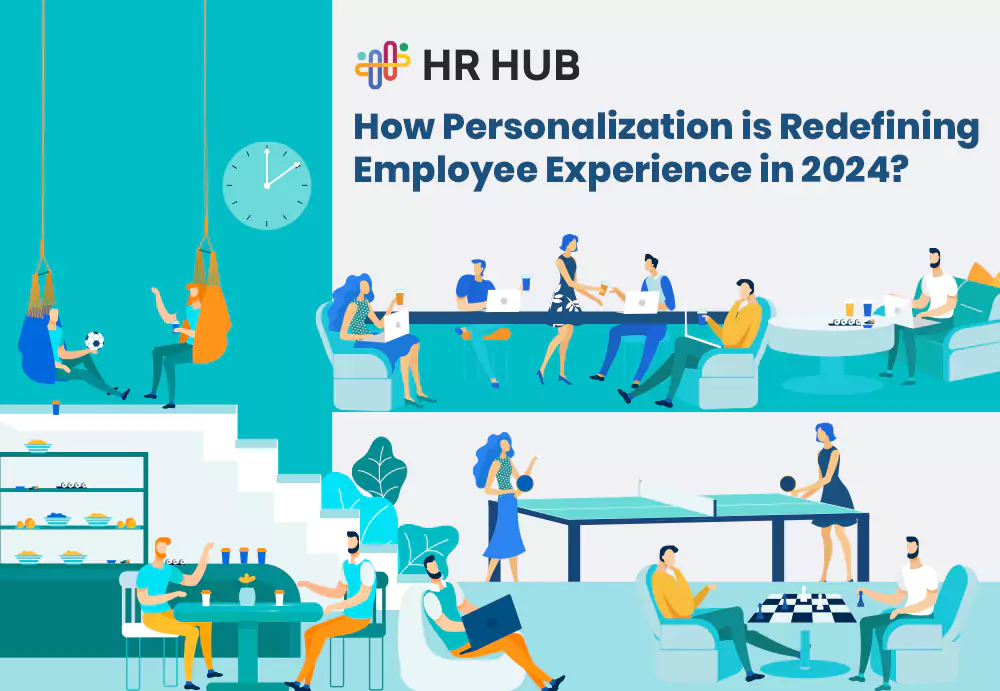


This site uses cookies to deliver our services. By using our site, you acknowledge that you have read and understand our Cookie Policy. Your use of HR HUB's services is subject to these policies.

"Workplace life is evolving, and so should your leave management system."
If your HR team is still using spreadsheets, endless threads of emails, and sticky notes to plan leave — newsflash: the game has changed.
Welcome to the age of hybrid work, where employees punch in from living rooms, shared workspaces, or halfway around the world — and the traditional methods of managing leaves just don't cut it anymore.
As businesses ride the tide of remote flexibility and in-office collaboration, one thing is for sure: managing employee leaves has never been harder — or more critical. The good news? There’s a smart solution. Leave management software is becoming the unsung hero in this new normal.
Flexibility is no longer a perk — it’s the norm. The hybrid workforce blends the best of both worlds: remote productivity with in-person synergy. However, while employees embrace the freedom, HR teams sweat behind the scenes.
Managing flexible work schedules, ensuring fair leave policies, and juggling remote teams scattered across time zones? It’s enough to make any HR pro want to hide under their desk.
This isn’t just a shift in logistics — it’s a paradigm shift. And it demands new-age tools that adapt and evolve. The future of work belongs to those who embrace tech, ditch the manual chaos, and get smart with their systems.
Hybrid work has redefined how we think about attendance, availability, and accountability. But with that freedom comes a storm of complications — especially regarding tracking leave. Here’s a deep dive into the real, day-to-day challenges HR teams face:
Imagine this: An employee in New York requests a half-day leave for a Friday afternoon. Their manager, based in Dubai, reviews it Monday morning. The mismatch doesn’t just delay approvals — it creates scheduling mishaps, like understaffed shifts or misallocated resources.
With hybrid teams spread across geographies, time zone differences can lead to:
Some team members work five days in-office, others work remotely full-time, and a few mix it up week by week. This diversity makes it almost impossible to apply blanket leave rules. For example:
Without clarity, HR faces a minefield of inconsistencies — not to mention the perception of favoritism or inequality among employees.
Traditional leave tracking methods — like Excel sheets or informal Slack messages — are error-prone, especially when juggling hundreds of records. One mistyped date or forgotten approval can lead to:
When every department tracks leave in its own way, there’s no single, real-time source of truth. Managers are left guessing:
Without visibility, project planning and resource allocation suffer. Business continuity gets compromised.
Bottom line? Managing leave in hybrid setups isn’t just an administrative task anymore — it’s a strategic necessity that demands intelligent systems.
Hybrid workforces bring freedom — but also fragmentation. Employees log in from cafés, co-working spaces, home offices, or headquarters, often on staggered schedules and across multiple time zones. In such a landscape, traditional leave processes collapse under their weight.
That’s where leave management software steps in like a backstage hero, transforming how leave is tracked and how teams function, connect, and thrive.
With people working from everywhere, companies need one central hub for everything leave-related. Leave management software brings everyone — remote interns to senior leadership — into a single digital ecosystem.
No matter where employees are or how they work, their leave data lives in one place. That means:
Example: A US-based employee working on EST and a Singapore-based manager no longer struggle with date misunderstandings — the system adjusts for both time zones and provides a synced dashboard.
A hybrid workforce can’t afford delays. Leave software ensures that requests, approvals, and balance updates happen in real time, not “when HR gets to the email.”
This reduces back-and-forth and keeps teams moving forward — without the lag.
Whether you’re managing a 20-person team or scaling to 2,000 employees across continents, modern leave software is built to grow with you.
Let’s face it — enforcing leave policies manually can feel like a full-time job. Automated systems ensure compliance without micro-managing. Set up the rules once, and the software applies them:
It’s not just a management tool — it’s a compliance guardian.
With built-in reports and team calendars, managers can:
This helps avoid productivity dips, missed deadlines, or sudden staff shortages — especially during holidays or peak seasons.
If you're evaluating tools, features are everything — they determine whether your investment becomes a strategic advantage or another admin task. Here are the must-have features that truly serve hybrid teams:
Employees should be able to manage leave anywhere, anytime — whether in the office, on a client visit, or waiting in line at the grocery store.
That means:
No more chasing signatures. Leave requests flow through intelligent approval workflows, reducing delays and bottlenecks:
Bonus: Set blackout periods where leave isn’t allowed (e.g., year-end audit time).
Every organization has quirks — different policies for part-timers, probation employees, contract staff, or senior managers. Leave software should:
Example: You can create a wellness leave category that nudges employees to take a break once every quarter.
Give managers and team members visibility into:
These calendars can sync with Google, Outlook, or project management tools like Jira, Trello, or Asana.
Knowledge is power. These dashboards show:
HR teams can finally be proactive instead of reactive.
A great leave tool should plug directly into:
This avoids double-entry, reduces errors, and keeps data flowing in one ecosystem.

While management and HR love automation, let’s talk about what makes employees adore these tools — and why it leads to better engagement, retention, and trust.
Employees can log in and instantly see the following:
This transparency removes friction and builds a sense of fairness across the board.
Self-service is the gold standard. Employees want to:
All from the same interface — even outside office hours. It’s freedom with structure.
In hybrid setups, remote employees often feel on the fringe of company culture. Leave management software enforces uniform rules so no one feels disadvantaged or overlooked.
Whether someone is in Lagos or London, they:
It promotes equality, inclusion, and respect.
When the process to apply for leave is easy and approvals are quick, employees are more likely to:
The result? Healthier, happier, more productive teams.
Empowering employees to manage their own time off — within fair boundaries — sends a strong message:
"We trust you to know when you need rest."
That simple trust translates into stronger loyalty, ownership, and engagement — the intangible ROI no spreadsheet can measure.
What does tomorrow hold for leave management? One word: intelligence.
Imagine your software recommending the best days for leave based on team schedules and project timelines — all powered by AI. No more back-and-forth planning.
Systems will soon detect patterns in absenteeism, team burnout signals, or seasonal trends — helping HR make proactive decisions, not reactive ones.
Next-gen platforms will adapt to individual employee behavior, offering personalized dashboards, reminders, and leave suggestions.
With workforces becoming increasingly global, future tools will offer localized policy engines — adapting leave policies to labor laws based on region automatically.
Think: carbon-conscious time-off scheduling, promoting wellness leaves, or encouraging digital detoxes — all becoming part of the HR ecosystem.
In essence, the future of leave management is not just functional — it’s strategic, predictive, and employee-centric. And the companies that embrace this evolution? They’ll lead the future of work.

Hybrid work is here to stay — and outdated leave processes just won’t cut it anymore. Organizations need smarter, faster, and fairer ways to manage time off across flexible teams and locations.
Modern leave management software empowers HR to stay efficient, helps managers plan better, and gives employees the control and clarity they deserve.
HR HUB makes it all possible. With flexible policies, real-time tracking, and mobile access, our Leave Management module is built for the way you work today — and where you’re headed tomorrow.
Experience leave management reimagined. Explore HR HUB now.



Ready to streamline your HR processes? Contact us today to learn how HR HUB can help your organization thrive. Fill out the form, and one of our experts will reply shortly. Let's empower your workforce together!
